Poskonnik chocolate, why it is attractive, how to plant and grow
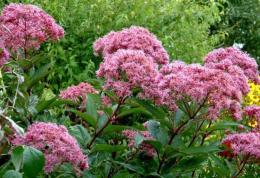
Poskonnik is a little-known plant for flower growers, but those who are lucky enough to grow it on their plot appreciate the flower for its discreet beauty and tenderness.
Content:
- Characteristics of the species
- The most popular varieties
- Landing rules
- Reproduction methods
- Pest and disease control
- How to prepare a plant for winter?
Characteristics of the species
It is a perennial with tall and strong stems; annual herbaceous or semi-shrub specimens are less common. The height varies from 90 to 150 cm, the leaves are 10-15 cm, elongated, pointed at the end, blooming has a reddish tint, and after some time - burgundy-green.
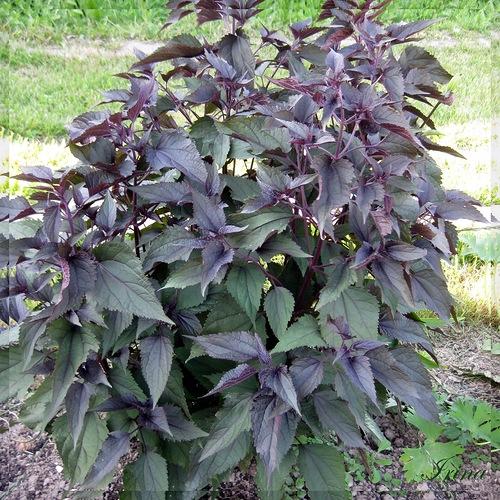
The color of the flowers is white, pink, soft blue, light purple, they are in small baskets, collected in large inflorescences 12-15 cm wide. Bloom begins in late summer or early autumn. The fruits are achenes.
The most popular varieties
There are about 600 varieties window sill, growing in Europe, Asia and America, and we will describe the most popular of them further.
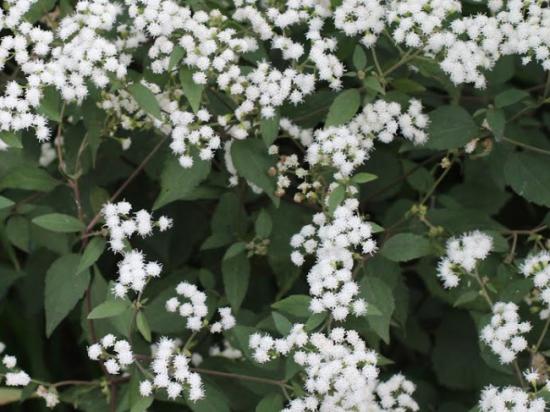
Wrinkled “Chocolate” - this name appeared due to the specific color of the leaves and buds, they are almost black or brown, and against their background the blooming flowers look even more elegant. The leaves are oval-shaped, jagged, located opposite each other. The height of the bush reaches a meter, so it is necessary to tie it to the supports so that the bush does not break off. Grade enough frost-resistant, can withstand sub-zero temperatures.
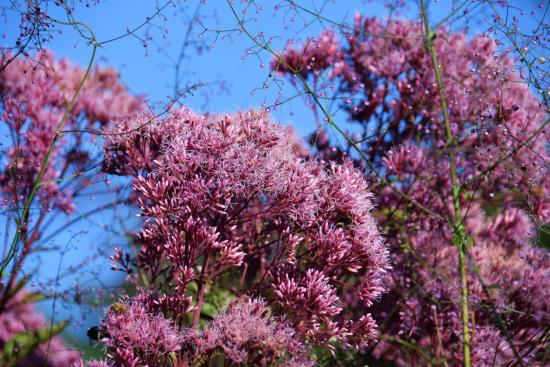
Purple is a rhizomatous plant that grows up to 150 cm in height. The leaves are large, oval-shaped, with serrated edges. The flowers are soft pink, lilac, and very rarely white. Even without covering it is frost-resistant.
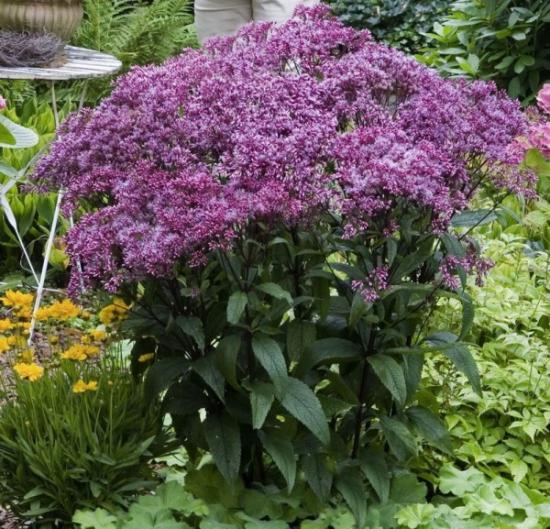
Spotted. The flower of this species is very similar to purple, but with its own characteristics. The species is native to Eastern America and has a huge number of varieties. It grows up to 180 cm, the stems are powerful, wide, the flower baskets are wide, bright, wine-colored.
Tubular - the species cannot boast of much variety. It grows as a large bush in the shape of a trapezoid, the flowers are white and the stems are burgundy. Often used in landscape designs to create a spectacular background.
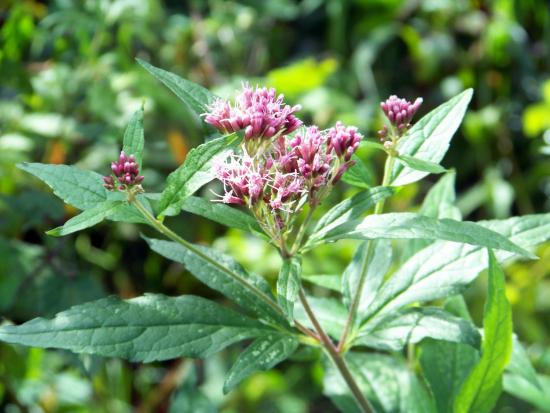
The hemp sapling resembles hemp with its leaves and stems. Under natural conditions, the most common species in our latitudes. Loves meadows and alder thickets. Height is about 150-160 cm, characterized by long flowering, flowers are white or bright pink. Sometimes the hemp variety is called terry, due to the presence of bright bracts.
Landing rules
Chocolate sapling rhizomes should be planted in April or early May, and seedlings at the end of spring so that it does not die during frosts. Choose a sunny, illuminated place, as he loves sunlight. In flower beds, the flower is planted at the back, as it is tall and spreading.
Chocolate sill is often used to design gardens and flower beds; the tall bush looks impressive and blooms for a long time. You can buy seedlings for planting in specialized flower shops or grow them yourself.
If you decide to buy a ready-made one, you should carefully examine the root system.It should be well formed, strong to take root well, but not overly large.
Planting and caring for the chocolate sapling consists of the following work:
- Prepare soil Before planting, loosen it well.
- Add fertilizers (bone meal, wood ash, fertile soil 1:3:6).
- Level the surface of the flower bed.
- Dig planting holes (60-70 cm distance between holes).
The flower is picky about soil, as in natural conditions it prefers swampy places. Fertile, loose soil is ideal, but clay or sandy soil is not suitable for growing.
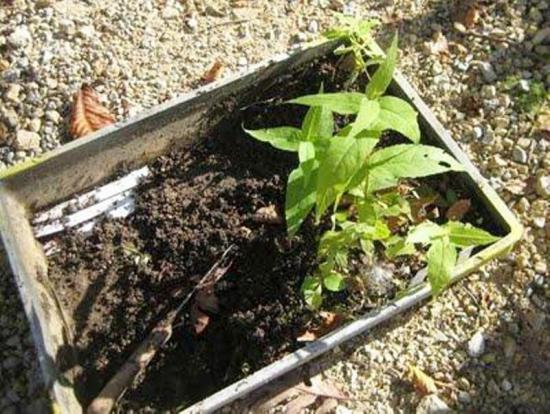
The seedlings are carefully removed from the pots, turning them over and knocking lightly, place the flower inside the hole, straighten the root system and sprinkle with soil up to the root isthmus, then compact the soil.
The planting holes and the space between them are well watered. Watering is necessary constant, abundant, even excessive moisture of the soil has a good effect on growth and flowering. It is worth constantly loosening the soil, removing weeds and mulching the surface around the bush.
Fertilizing three times a day with mineral fertilizers during the growing season has a beneficial effect. Pruning is not required, since the bush dies every year, and for the winter, dried branches are simply cut off at the root with sharp scissors.
Reproduction methods
Reproduction happens in several ways:
- Seeds.
- By dividing the rhizomes.
- By cuttings.
The seeds are small, so they are mixed with sand, distributed over the surface of the soil in a pot, slightly pressed into the soil and watered. Then you need to cover the pot with glass or plastic wrap and move it to a warm place. After waiting for the first shoots with 2-3 full leaves, they are transplanted into separate containers.Flowering should be expected 2-3 years after planting the seeds. Sometimes plants appear by self-seeding if the dried branches of the bush are not cut off.
At the end of summer, the subshrub is propagated by dividing the roots. The rhizome is cut into 3-4 parts, each of which is planted by transshipment in a separate hole. This method is best used for young bushes up to 3-4 years of age. It is better not to overuse this method, so as not to weaken the bush.
It is best to do cuttings in early spring, separating new shoots along with the roots. They need to be rooted in a warm place: a greenhouse, a greenhouse, often watered with warm water, and only then planted in open ground.
Pest and disease control
All types of saplings are very poisonous, and therefore most known pests and diseases avoid them. The most common pest are considered miners. They make small passages in the foliage, which are hidden with a film that protects them from the effects of chemicals.
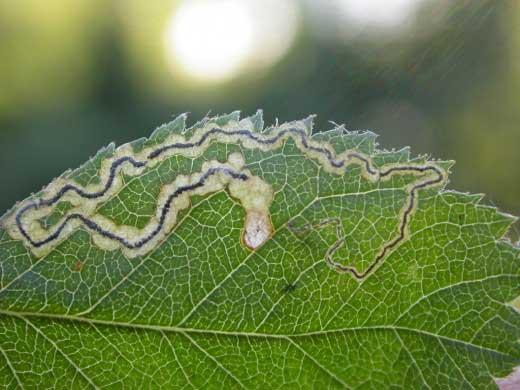
That is why their use will not bring results; in this case, only removing the damaged leaves will save the bush.
How to prepare a plant for winter?
The flower is quite frost-resistant and easily tolerates frosts in the middle zone. Preparing for winter season and frosts consists of proper pruning: faded inflorescences are cut off immediately, and dried stems are cut so that only a part of them, 10-15 cm, remains above the soil.
Only young shoots need to be covered; spruce branches are best suited for this. In the spring, after such pruning, greenery does not appear for a very long time, often until May; this is a characteristic of the plant, and you should not be afraid that it has died or become sick.
Pokonnik is a versatile and amazing flower.Unpretentious, resistant to frost, diseases and pests, it can truly decorate any garden and flower garden. Tall flowering bushes look great in landscape design, complement and hide unnecessary objects on the site.
Growing them requires a minimum of effort, and the result will please gardeners and flower growers for a long time.
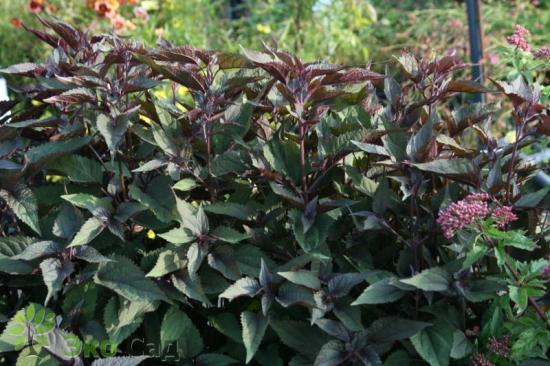
You can learn more about the features of this unusual plant, its care and propagation, as well as its types by watching the video:

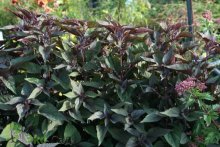
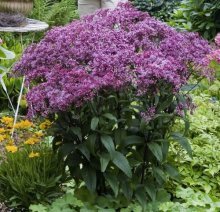

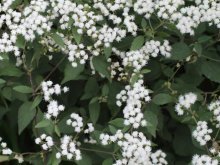
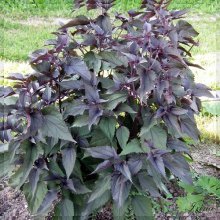
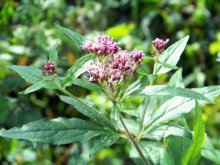
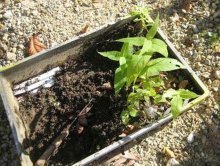
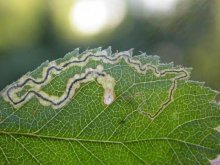
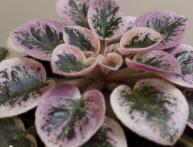
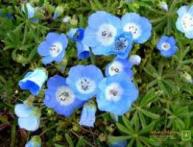
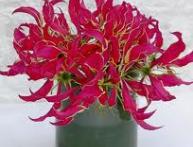
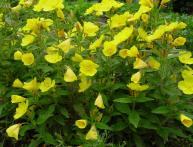

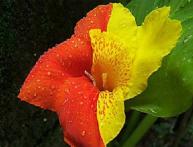
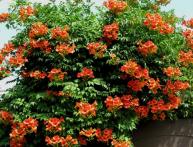
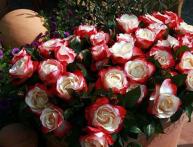
Comments
Very beautiful perennial flowers. Such bright and large inflorescences. They will please the eye in September, when there are already few flowers on the site. Only Septembers and Chrysanthemums are blooming. I saw red Poskonnik flowers in our city, but I didn’t know what they were called. Next year, you will need to buy such flowers for your flowerbed.